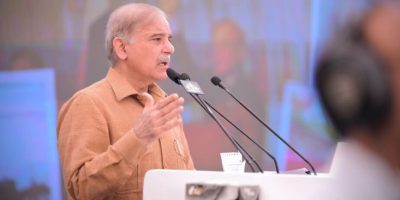Women face higher stroke rates than men: experts

ISLAMABAD, Oct 29 (DNA): Stroke is a non-communicable disease that attacks 15 million people worldwide every year and claims a life every six seconds. Stroke claims lives of nearly six million people each year.
People are often surprised to know that young people suffer strokes and even more shocked that women are more likely to have a stroke than men. One in six people will have a stroke. For women, that figure is one in five, according to Consultant Neurologist and Head of Neurology Division at Shifa International Hospital, Dr. Maimoona Siddiqui.
She was addressing to a public awareness seminar organized by Shifa International Hospital (SIH) to mark world Stroke Day. The day is being celebrated all over the world to disseminate essential life-saving information and share knowledge about actions and lifestyle behaviors that could avert stroke.
“1 in 6” was a theme selected by World Stroke Organization (WSO) last year and is continued this year along with the slogan “Stroke affects me – Stroke affects everyone”. A large number of people from different walks of life attended the seminar. Free blood Sugar, Cholesterol, blood Pressure and BMI tests were also conducted at the event.
Dr. Maimoona Siddiqui said that stroke is a sudden brain damage and lack of blood flow to the brain caused by a clot or rupture of a blood vessel. “Every six seconds, someone’s quality of life suffers due to stroke. They become physically disabled.” Stroke is the second leading cause of death for people above 60. 350,000 Pakistanis suffer from stroke every year But Stroke is a treatable and preventable catastrophe, she stated.
Associate Consultant Neurologist SIH Dr. Mohammad Amjad in his presentation briefly discussed the causes, sign, symptoms and management of stroke. He warned that 15 per cent of strokes have TIA (Transient Ischemic Attack) first, and that 1 in 20 patients will have a true stroke in 3 months.
He also shared details about various complications of stroke such as difficulty in swallowing, development of pressure sores, mouth care, as well as stroke rehabilitation interventions.
Dr. Mansoor Iqbal, Consultant Neurologist (PIMS) said that “With reference to stroke recovery, the gathering was informed that 10 per cent of stroke survivors recover almost completely, 25 per cent recover with minor impairments, 40 per cent experience moderate to severe impairment requiring special care, 10 per cent are fully dependent on others, and 15 per cent die shortly after the stroke”.
Dr. Raja Farhat Shoaib, consultant stroke physician said, the sudden signs of stroke can be remembered through FAST, which stands for Face drooping, Arm weakness, Speech difficulty, and Time of Onset.
A person who shows any of these symptoms, even if the symptoms go away, should immediately be rushed to the hospital. Dr. Farhat said, the risk of stroke can be reduced by following life’s simple 7 rules: check your blood pressure, eat healthy, exercise regularly, lose excess weight, lower cholesterol, reduce blood and don’t smoke.
Dr. Khaula Ashraf, Associate Consultant, Physical & Rehabilitation Medicine, SIH, discussed the importance of physiotherapy in rehabilitation of stroke patients. She said that maximum recovery can occur within the first 6 months. Stroke sufferers and caregivers should learn to do physiotherapy at home to enhance patient’s quality of life, she advised. DNA
Related News

Gov’t determined to provide 100% free medical facilities to deserving patients: PM
ISLAMABAD, Jul 21 (APP): Prime Minister Muhammad Shehbaz Sharif on Sunday said the government wasRead More



Comments are Closed